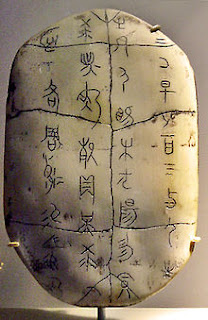Evolution of Chinese Characters
The
Chinese writing system is an unique phenomenon in the modern world of alphabet
scripts. Instead of a few dozen letters, it has developed thousands of complex
signs or "characters" that represent morphemes and words. Even
related writing systems such as Japanese and Korean, while sharing many of the
same characters, can fully function as purely phonetic scripts.
The
first recognizable form of Chinese writing dates from 3,500 years ago, but many
argue that its origins lie much deeper in the past. Regardless of its actual
age, Chinese has evolved substantially over time yet has retained its ancient
core, making it one of the longest continuously used writing system in the
world.
Original
Based
on pictographs, Chinese characters combine shapes with sounds and connotations
to form unique, block-shaped characters that carry meaning.
The
earliest form of Chinese writing is called the oracle bone script, used from
1500 to 1000 BCE. This script was etched onto turtle shells and animals bones,
which were then heated until cracks would appear. By interpreting the pattern of the
cracks, Shang court officials would make divinations of future events, hence
giving the name "oracle bones" to these animal bones.
Stages of Chinese Writing
After the early evolution, the script continued to evolved. Visually it became increasingly more
linear, more stylized and less resembling of the natural objects. It also grew
in complexity, as the innovations of semantic determinatives (radicals) and
phonetic complements continued to be applied to form new words.
Scholars have conveniently divided
different styles of Chinese writing into a number of "scripts". The
following chart compares different Chinese characters in various forms
throughout time.
The
first four phases of Chinese writing trace the first 1,500-year history of
Chinese and essentially encompass the evolution from a nascent pictographic and
ambiguous writing script to a standardized system containing thousands of
characters still in use today.
Influence
As the only indigenous and the oldest
writing system in East Asia, the Chinese writing system became the inspiration
and the basis for many other East Asian writing systems, some prominent and
still in use, while other having faded into obscurity and disuse. Together they
are loosely called the Sinitic family of scripts, which includes the following
scripts.
Japanese
 |
At first the Japanese
wrote fully in Chinese, but over time the Chine.
The
result is a set of three scripts serving as a single writing system. One of the
scripts, kanji is essentially
Chinese characters, whereas the other two systems, hiragana and katakana
are simplified forms of certain Chinese characters and used exclusively to
represent sounds.
Korean
Writing
in Korea also started as an adoption of the Chinese script to fit the Korean
language, and as a result Chinese characters called hanja came to represent both words as well as sounds.
Khitan
The Khitan people were a powerful Mongolian
tribe that dominated Northern China and established the Liao dynasty between
the 10th and 12th centuries BCE and invented not one but two scripts both based
on Chinese and augmented to their language.
Vietnamese Chu Nom
means
"Southern Writing" and it was a script to write Vietnamese using
Chinese character construction principles. What this means is that traditional
radicals were paired with characters serving as phonetic components to
construct Chu Nom characters that represent Vietnamese words.







No comments:
Post a Comment